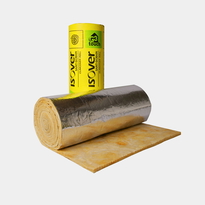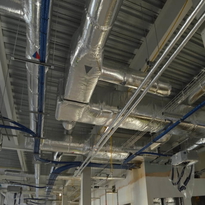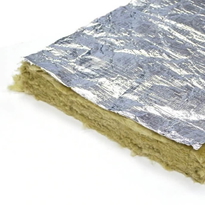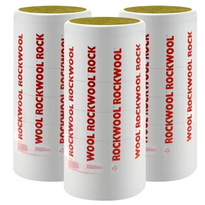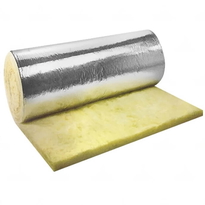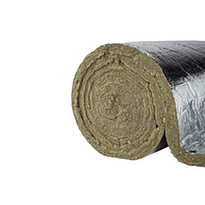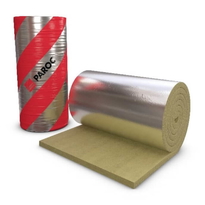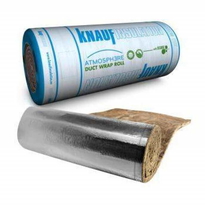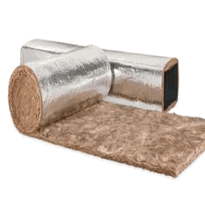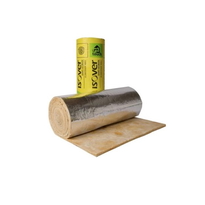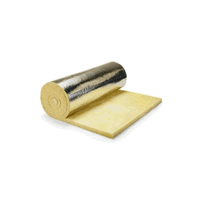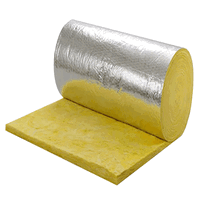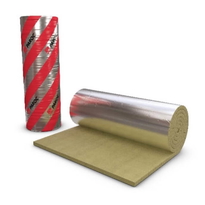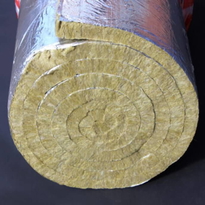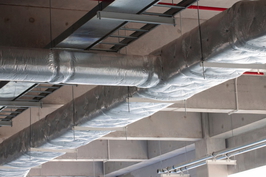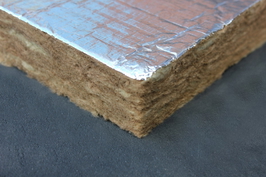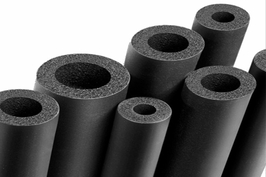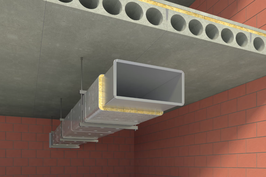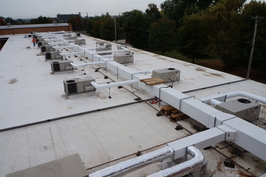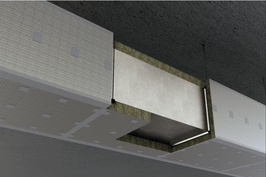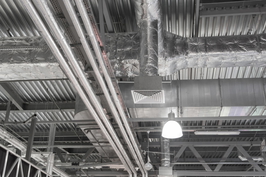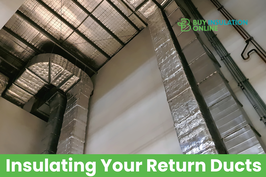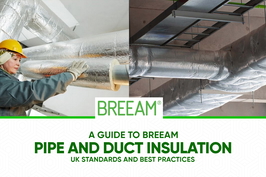Ac Duct Insulation
Proper AC Duct insulation involves selecting appropriate materials such as fiberglass, polyethylene foam, or rockwool, each offering specific benefits like thermal resistance, moisture protection, and soundproofing. Installation requires precise measurement, secure wrapping, and sealing joints with mastic or specialized tape to prevent air leaks and condensation.
Applying vapor barriers and maintaining recommended thicknesses enhance energy efficiency and prolong the lifespan of the system. Different environments call for customized solutions, and ongoing maintenance is essential to ensure optimal performance.
Focusing on effectiveness and durability, the right insulation can greatly improve comfort and efficiency within UK buildings. Further information can be sought to tailor the insulation approach to specific requirements.
Types of Insulation Materials for AC Ducts
Selecting the appropriate insulation material for air conditioning ducts is a vital step in ensuring energy efficiency, thermal regulation, and noise reduction within HVAC systems.
Fiberglass remains a popular choice due to its excellent thermal and acoustic properties. It's available in the form of duct liners and wraps, suitable for a variety of installation environments. Its effectiveness in reducing heat transfer and noise makes it a reliable option for many applications. Its moisture resistance and ease of installation further contribute to its widespread use.
Polyethylene foam provides a weather-resistant alternative that offers strong thermal resistance and elasticity. This flexibility makes it particularly suitable for irregular-shaped or exposed ducts, ensuring improved insulation even in less conventional configurations. Additionally, its lightweight design facilitates quick and simple installation.
Rockwool insulation, produced from recycled materials, is known for its durability and effective soundproofing capabilities. It's often used as internal duct lining to minimize noise transmission and enhance thermal retention within the system. It also has a high fire-resistance rating, making it a safe choice for many building codes. Its ability to withstand high temperatures ensures long-term performance in various HVAC environments.
Non-woven materials, composed of bonded fibers, deliver moderate insulation at a lower cost. They're simple to install and are especially useful in lightweight applications, making them a practical choice for budget-conscious projects. Their moderate thermal performance can be advantageous in less demanding conditions.
Foam insulations, such as polyurethane or polyethylene, offer varying degrees of moisture resistance and thermal performance. They're adaptable to multiple duct configurations, providing customizable solutions for different installation requirements. Their quick-setting properties can significantly speed up project timelines.
In choosing insulation materials for AC ducts, it's essential to consider the specific environmental conditions and performance needs of your system to ensure optimal operation and energy efficiency. Understanding the and compliance requirements can help ensure the selected insulation performs reliably over its lifespan.
Benefits of Proper Duct Insulation
Proper duct insulation offers tangible benefits that enhance the overall performance and efficiency of heating, ventilation, and air conditioning (HVAC) systems. By minimizing heat loss and heat gain, insulated ducts ensure conditioned air reaches the targeted areas without unnecessary energy consumption, leading to lower utility bills and improved cost-efficiency. This insulation also bolsters system reliability and extends its lifespan by reducing strain and wear on components, which helps prevent system failures. Furthermore, consistent indoor temperatures are maintained, promoting occupant comfort and reducing cold drafts. Proper insulation also contributes to better indoor air quality by limiting air leakage, which can bring in dust, pollutants, and other contaminants. From an environmental standpoint, efficient system operation reduces energy waste, thereby lowering carbon emissions and supporting sustainability initiatives.
Installation Methods and Best Practices
Effective installation of duct insulation requires careful preparation and adherence to established procedures to ensure optimal thermal performance and longevity.
First, duct surfaces must be thoroughly cleaned to remove dust and debris, which promotes effective adhesion of insulation materials. In addition, inspecting ducts for damage or deterioration can help identify areas needing repair before insulation is applied.
Accurate measurements of duct lengths are essential to cut insulation to the correct sizes, allowing for overlaps that prevent gaps.
When applying insulation, it should be wrapped snugly around the duct, with joints sealed using mastic or tape to prevent air leaks. Securing the insulation with duct tape or other fasteners ensures stability, while applying a vapour barrier jacket prevents moisture infiltration. Proper handling tools and techniques also help achieve a tight, professional finish.
Selecting appropriate insulation thickness, such as 40-50 mm, and considering U-value standards improves energy efficiency.
Following safety precautions, such as wearing masks, is vital when handling insulation materials. Implementing proper safety protocols reduces health risks associated with insulation installation.
Applications Across Different Settings
Applications of duct insulation vary significantly across different environments, each requiring tailored solutions to optimize performance and meet specific needs.
In residential settings, insulation materials such as glass fiber and foam board are commonly utilized to maintain stable internal temperatures, prevent condensation, and adhere to prescribed thermal performance standards. These measures enhance occupant comfort and optimize energy efficiency by helping to minimize heat loss or gain within the dwelling. Moreover, the choice of insulation must also consider acoustical performance to reduce noise transfer between rooms and from external sources.
Commercial environments often demand insulation solutions that contribute to noise reduction, meet strict building regulations, and effectively manage temperature fluctuations in confined spaces or on rooftops. Materials like specialized duct liners or bespoke wraps are frequently employed to accomplish these goals, ensuring smooth operation and compliance with functional standards. For example, utilizing insulation with foil facing can provide additional moisture resistance and vapor barrier properties critical in such settings.
In industrial contexts, insulation must exhibit exceptional durability to withstand demanding conditions, including extreme temperatures and exposure to various substances. Robust insulants play a crucial role in reducing energy consumption, controlling noise levels, and maintaining safety standards in challenging environments.
Outdoor and rooftop applications necessitate weather-resistant materials capable of providing ongoing protection against rain, sunlight, and other environmental factors. These installations require additional emphasis on maintenance and inspection to preserve insulation integrity over time.
Furthermore, aesthetic considerations can influence the choice of insulation materials in visible ductwork, where a balance must be struck between functional performance and visual harmony within architectural designs. Selecting appropriate materials ensures that ducts not only perform effectively but also contribute positively to the overall appearance of the space.
Enhancing Energy Efficiency and Maintenance Tips
Enhancing energy efficiency in duct systems involves implementing a series of targeted strategies designed to minimize energy losses and optimize overall performance.
Proper insulation of air ducts significantly reduces energy waste, conserving up to 40% of heating and cooling energy. Using materials like fiberglass insulation ensures high thermal performance, helps maintain design temperatures, and prevents moisture condensation that can lead to water damage. Research indicates that well-insulated duct systems can also prevent pressure imbalances that cause additional energy losses. Regular inspections are essential to identify leaks, damage, and insulation degradation, enabling timely repairs and upgrades. Sealing leaks reduces wasted conditioned air, while upgrading insulation improves thermal efficiency and prevents condensation issues.
Choosing appropriate insulation materials, such as elastomeric foams or reflective products complemented by vapor retarders, maximizes thermal benefits. In addition, selecting moisture-resistant insulation can further protect against water-related problems and improve durability.
These measures decrease energy consumption, lower utility bills, and contribute to reducing greenhouse gas emissions, supporting both economic and environmental sustainability.
Conclusion
Proper insulation of AC ducts is vital for maintaining energy efficiency, preventing heat gain or loss, and reducing utility expenses. Choosing suitable materials, applying correct installation techniques, and undertaking regular maintenance are essential for ensuring optimal system performance and durability.
By understanding these best practices, facility managers and homeowners in the UK can effectively enhance indoor comfort, prolong the lifespan of equipment, and minimise operational costs. Implementing comprehensive duct insulation strategies provides a practical approach to achieving reliable and cost-effective climate control.
